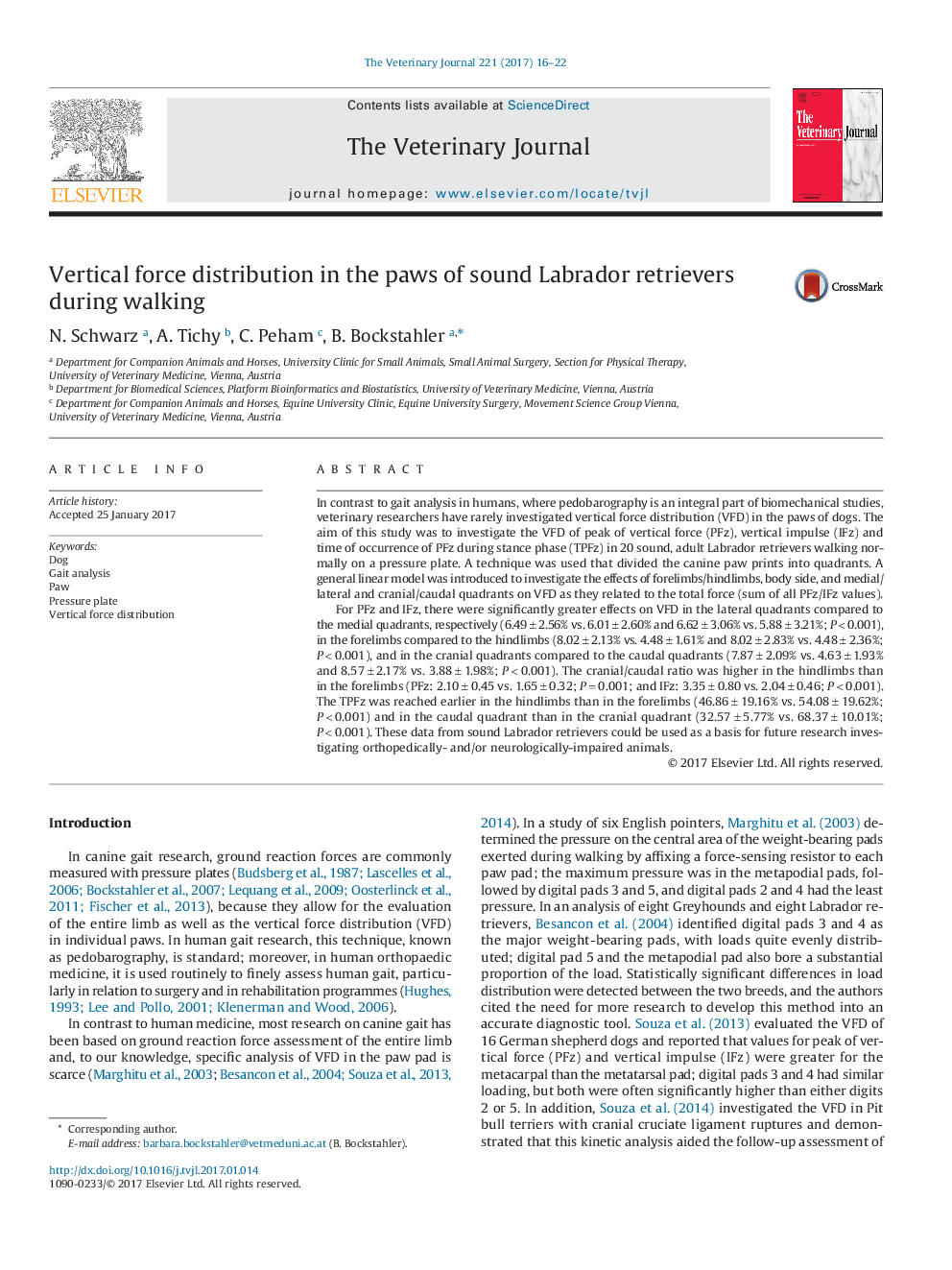| کد مقاله | کد نشریه | سال انتشار | مقاله انگلیسی | نسخه تمام متن |
|---|---|---|---|---|
| 5544908 | 1555222 | 2017 | 7 صفحه PDF | دانلود رایگان |

- This study investigated the vertical force distribution in canine paws divided into quadrants.
- Peak vertical force and vertical impulse were greater in the lateral than the medial quadrants and in the cranial than the caudal quadrants.
- The cranial/caudal ratio was higher in the hindlimbs than in the forelimbs.
- TPFz was reached earlier in the hindlimbs than forelimbs and in the caudal than cranial quadrant.
In contrast to gait analysis in humans, where pedobarography is an integral part of biomechanical studies, veterinary researchers have rarely investigated vertical force distribution (VFD) in the paws of dogs. The aim of this study was to investigate the VFD of peak of vertical force (PFz), vertical impulse (IFz) and time of occurrence of PFz during stance phase (TPFz) in 20 sound, adult Labrador retrievers walking normally on a pressure plate. A technique was used that divided the canine paw prints into quadrants. A general linear model was introduced to investigate the effects of forelimbs/hindlimbs, body side, and medial/lateral and cranial/caudal quadrants on VFD as they related to the total force (sum of all PFz/IFz values).For PFz and IFz, there were significantly greater effects on VFD in the lateral quadrants compared to the medial quadrants, respectively (6.49â±â2.56% vs. 6.01â±â2.60% and 6.62â±â3.06% vs. 5.88â±â3.21%; Pâ<â0.001), in the forelimbs compared to the hindlimbs (8.02â±â2.13% vs. 4.48â±â1.61% and 8.02â±â2.83% vs. 4.48â±â2.36%; Pâ<â0.001), and in the cranial quadrants compared to the caudal quadrants (7.87â±â2.09% vs. 4.63â±â1.93% and 8.57â±â2.17% vs. 3.88â±â1.98%; Pâ<â0.001). The cranial/caudal ratio was higher in the hindlimbs than in the forelimbs (PFz: 2.10â±â0.45 vs. 1.65â±â0.32; Pâ=â0.001; and IFz: 3.35â±â0.80 vs. 2.04â±â0.46; Pâ<â0.001). The TPFz was reached earlier in the hindlimbs than in the forelimbs (46.86â±â19.16% vs. 54.08â±â19.62%; Pâ<â0.001) and in the caudal quadrant than in the cranial quadrant (32.57â±â5.77% vs. 68.37â±â10.01%; Pâ<â0.001). These data from sound Labrador retrievers could be used as a basis for future research investigating orthopedically- and/or neurologically-impaired animals.
Journal: The Veterinary Journal - Volume 221, March 2017, Pages 16-22